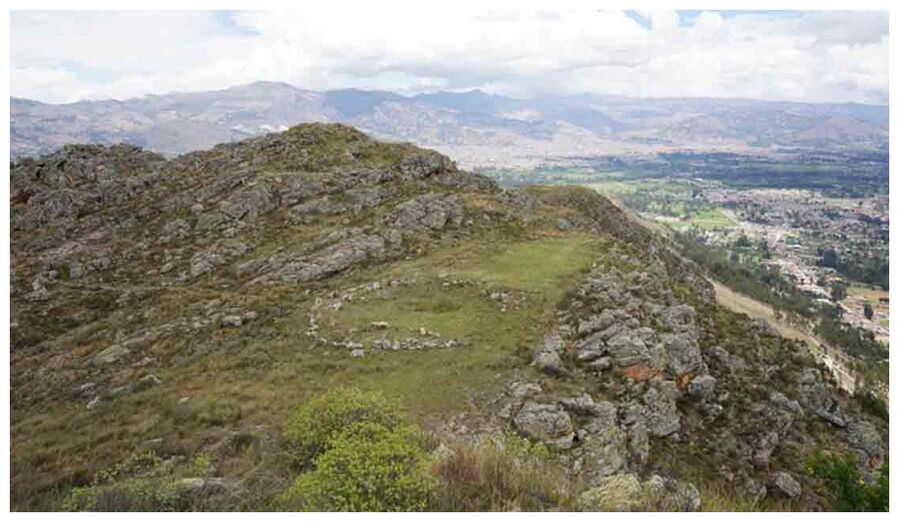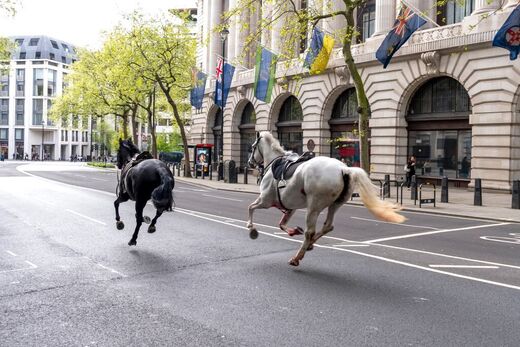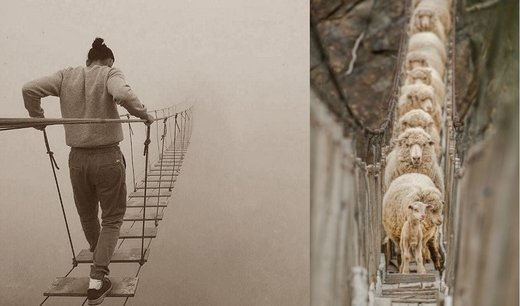
The plaza, which is situated at the Callacpuma archaeological site in the Cajamarca Basin of northern Peru, was constructed using large megalithic stones that were arranged vertically, a technique not previously used in the Andes.
This significant finding is a unique structure of a stone circle, where offerings were made to long-forgotten gods over several millennia at an elevation of more than 3,000 meters (9850 feet) above sea level.
The project's leaders, Associate Professor Jason Toohey, and Professor Melissa Murphy, have been researching this topic since the project began in 2015. Excavations for the plaza began in 2018.
Their article, published in the journal Science Advances, provides new information about the northern Andes' oldest known circular megalithic plaza. Radiocarbon dating indicates that it was built around 4,750 years ago, during the Late Preceramic Period, making it one of the Americas' earliest examples of this type of architecture.
Large megalithic stones are set in two concentric circles, each measuring 18 meters (60 feet) in diameter. This arrangement creates a ceremonial area that is full of unknown information from the time when hunter-gatherers in what is now Peru began to build more sophisticated societies.
A prominent feature of the late preceramic era, the plaza represents a critical period of transition in South America when coastal fishing communities started to trade with emerging mountain agricultural societies. It is a prime example of monumental architecture built prior to the widespread adoption of agriculture and long-term settlements.
"This structure was built approximately 100 years before the Great Pyramids of Egypt and around the same time as Stonehenge," Jason L. Toohey says.
These dates signify that the circular plaza at Callacpuma is the earliest known example of monumental and megalithic architecture in the Cajamarca Valley — and one of the earliest examples in ancient Peru.
Further discoveries at the site include unworked lapis lazuli gems, quartz crystals, and pieces of ceramic cups and bowls, all of which demonstrate the site's significance and continued use even after the local populations had mastered pottery.
Dated to the Layzón period (500-200 BC), recent artifacts made of soft kaolin clay indicate that the stone circle was visited on a regular basis until it was ceremoniously sealed during that same period for unidentified reasons. Semi-nomadic peoples' building of these ritual sites reflects a change in their belief systems, which place more emphasis on group efforts and interregional cooperation.
The project is led by Toohey and Patricia Chirinos Ogata from the University of California-Santa Barbara. The team also includes Murphy, as well as undergraduate and graduate students from Peru and the U.S.
They work with locals close to the Callacpuma site on research findings and the significance of cultural heritage as part of their outreach to the community. Working together, further scientific investigations and site preservation can continue.
Journal Reference:
Jason L. Toohey, Melissa S. Murphy, Patricia Chirinos Ogata, Sarah G. Stagg, Alex Garcia-Putnam. A monumental stone plaza at 4750 B.P. in the Cajamarca Valley of Peru. Science Advances, 2024; 10 (7) DOI: 10.1126/sciadv.adl0572




Throw some Alexander Thom megalithic measurements at it, are the square walls in any sort of Pythagorean triples, 16 and 18 m diameter for the walls mentioned in the main article in Science are close to 8,15,17 triple, recall Stonehenge is 5,12,13 squared circle.
And setting these stones on a bed of a mixture of various aggregates , right on bedrock, is the start of masonry, not to be overlooked . Masonry is usually if not always the only evidence we have of ancient cultures.the oldest trade for a reason, it lasts, and math is always hidden in its arrangements, ( trade, not profession)
As usual Bru na Boine in Ireland not mentioned at all in the science article, or Stennes in Orkney, that this arrangement resembles.
3200 bc proven at Knowth and Dowth in Meath, right near the Ancient Hill of Tara, where kings of Ireland were crowned for millennia, and the massive Woodhenge found there two years ago hiding in plain site was a mind blower!
We really don’t know anything about these types of megalithic sites, must be some site lines of solar or lunar origin here as well, same as the European ones. Europe ones are close to coasts so probably markers for sailing and trading posts on certain days of the year, verified by the Sky watcher elite . Carnac in France a map for sure.
In comparison Stonehenge is a Ferrari and this is a Prius perhaps. But you had to start somewhere. Fascinating article Peru blows my mind, have to get there☘️🇨🇦
thanks